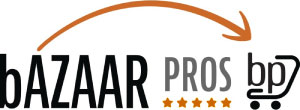Full transcript:
So you are selling online and you want to sell a lot more online, so that’s what we are here for, to help you sell a lot more online. If you’re not still selling online, unfortunately, this video will be not that helpful for you. Start selling first and then come back and watch these videos. And hopefully sell a lot more.
All right today we’re talking about ROAS Return On Ad Spend. This metric is considered very valuable and used all over the place to justify why you should hire an agency and see how your ads are doing.
Most agencies will use this as a metric to show you, hey, you spend $1 and you got $1.50 back on your ad. So your ROAS is great, you’re making money.
I think ROAS is misused quite a lot in our community. Marketing and advertising agencies are much more guilty than anybody else to use it incorrectly. And there are two reasons, it’s used incorrectly.
One, very simply, this is the way we like to show value. And it’s the easy way to show value.
Other it’s just easier to measure is available in most platforms. So they just use it for that reason.
So the fact that it’s easier to measure, I would not blame anybody for that because, hey, it’s just easier to measure. So we’ve got to measure something and ROAS is available.
So, OK, but the other idea that knowing that ROAS is not a complete metric and it’s kind of a risky metric to use and still using it, I think it’s not doing the right thing.
So let’s get into it.
Why ROAS is not a complete metric?
So the problem with ROAS is you spend $1 and you got $1.50 back, so you have a ROAS of one 50% or 1.5 x, whichever way you want to do this.
But here’s the problem…
What if your cost of goods or cost of goods plus shipping and everything included was actually 90 cents? Now what’s going on? You spend $1 and your cost of goods was $0.90. And you and you got the return of $1.50 for that.
So think about it, so your ROAS 1.5 x, every dollar you spend, you’re getting 1.5 back because you’re already spending $1. The first dollar is already gone. So it doesn’t matter. So you are actually getting $0.50 off.
So product, which cost you to make you getting $0.50 back, you’re losing money at one point. $0.5 is not good.
So the way to deal with that is you set a process, which keeps you profitable.
So if you do that, that in this example, will say, you know, my cost in $0.90. So I need to get it done of at least $0.90 on every sale, which means if I do get 1.9 x return, then, you know, at least I’m breaking even or if I get two extra hours of 3x, then I’m making some money.
That’s great. So that’s a great start.
But instead, there is more. If you hired a consulting team, you hired some marketing agency, they’re charging you something in addition to that spend. What about that?
That’s where I would like to introduce this new metric, which we use called ROMAS.
So we like to say, ask your agency to show you not the ROAS, but ROMAS (Return on Marketing and Ad Spend).
What is real return on marketing and ad spend. The idea here is when you run a campaign in which you spend $10,000 and additional $5,000 to that agency, then you should be considering all those $15,000 as part of your spend. And you should include in the way we do ROMAS. We include the cost of goods also in there. So the ROMAS of 1.5 truly means that you are making 50% profit.
So that’s simplifying it.
But basically the breakdown of ROMAS includes all the spend, your cost of goods, your agency spend, your consulting spend, your marketing spend, your ad spend, everything. And if romance is positive, is more than one, you’re guaranteed to be making money.
So I urge you guys, just don’t stop at ROAS. Calculate the ROMAS.
Unfortunately, ROMAS will not be available directly in any of the tools. It is something you’ll have to send up in a spreadsheet. You can get the ROAS in. And then you can add the cost of sale. And then add these other expenses and to calculate your ROMAS.
So once again, ask for ROMAS, not just ROAS. Otherwise you’re only making decisions based on half information and you might be losing money. And if you’re selling online or doesn’t matter, you’re selling online, offline. You never want to lose money. Right? no. 1 rule, don’t lose money while trying to do any business.
All right. That’s all I have. And as I like, as we say, this is all for information for you guys to help your business. And there is no cause we don’t teach any courses, etc., but we do this for our clients day in and day out. If you find this information useful, applies to your business, apply it and follow us to learn more. And if you need help in any of these areas, reach out. We’ll be happy to help you guys out and we will be calculating ROMAS, which means if you work with us, we will always be looking to show you overall return on your investment, including the money you will spend on agency like us.
Thank you.

